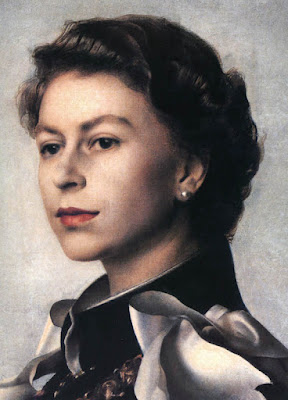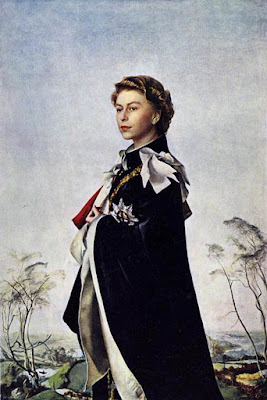Title : Annigoni on Photographic Reference
link : Annigoni on Photographic Reference
Annigoni on Photographic Reference
Following up yesterday's post about Why Bother Copying a Photo?, it might be valuable to consider the views of Italian artist Pietro Annigoni (1910-1988). In a YouTube video in the Italian language, he discusses why he doesn't use photography in his work. Blog reader Mario Zara generously provided the following translation:
Interviewer: for example, you are one of the few painters, if not the only one, who doesn't use photography. Today everyone...
Answer: Well, this return to the so-called classicism, to reality, based on photography, in my opinion is a mistake, it's a form of impairment, in the end, because working from life, which is so transient, always changing, manifesting infinite aspects... working from life means that you accept an effort, a struggle, a labor of conquest, which is removed if you use photography. If you remove this big effort, this struggle, you are removing too much... too many important aspects of art
I: So it's easy to copy a photo
A: Well... it definitely makes things easier. And then photography is a frozen instant of this reality, this truth I was talking about. Because truth changes together with us, while you are looking at it, it escapes [flees], you have to run after [chase] it, it's a completely different view of life, I would say.
I: So, besides technique, there is also a psychological aspect
A: yes, of course, it's a different way of life
I: So, the difficult part of portraiture - when you make a portrait, you make many poses, don't you?
A: yes
I: Where is the difficult part? In grasping the essence of the character?
A: To grasp something that is continuously escaping, in the end.
I: Which is the synthesis of that personality, because the instant...
A: The synthesis of...? It's the synthesis of I don't know what, it's that personality, and my personality mixed together. It's an experience of life, anyway... that's what, in my opinion, the use of photography cancels.

I: So you start studying the character with drawings? What do you do?
A: For me a portrait, or a figure, was first of all an object, like painting a still life. I had to draw this object, to put the eyes, the nose, the mouth and the ears in the right place... I mean, the construction of the figure, its shoulders and everything. Then, at a certain moment, I had to “go inside” this human being. So in the first poses I asked for a complete silence and stillness, then, after blocking in the portrait, as I said, with a construction as correct as possible, I started to talk to the person about many subjects, about any subject, in order to see how [s]he reacted, and lived, and so on, and I myself lived together with that person on those subjects. It was a way to go inside that person, also psychologically.
I: ...
A: A long, hard, laboring work. That's why, at a certain point, I got tired of making portraits...
I: But the most difficult thing is to let the soul come out from the eyes, isn't it? A: Well, from the eyes, and from every part, from everything; sometimes it's a matter of an instant, of a glimmer on a certain part of the face, which can change the expression. There are many aspects...
I: So during many poses... there is a moment... when everything gets clear [lights up]...
A: there is... when there is... sometimes there isn't, and you have to adapt.
I: I've read in you diary, when you went to the US, that Kennedy let you in his studio when he was meeting with his staff.
A: That was the kind of portrait I did for the “Times” covers. A few things, unfortunately disastrous for me.

I: They considered you the painter, you could stay aside...
A: They didn't pose, I was forced to “steal”...
I: who were the most patient? The Queen of England, the Pope?
A: oh, well, those... no, the Pope was like Kennedy, but the Queen at least granted me sixteen poses, princess Margaret twenty-six. I've always tried to get as many poses as possible, because my type of art...
[...]
I: At least, on this subject, on Annigoni as a portrait-painter, no one has nothing to object, they all agree...
A: well, I don't know, they may object on that too, I don't say...
I: no, no, I say, it's unquestioned... at list on this subject, Annigoni...
A: yes, yes, they let me do portraits, because incidentally portraiture...
I: is considered a genre...
A: a poor [cheap] genre, an outdated genre...
I: but on the contrary, it's the genre which requires the best technique and “eye”
A: well, portraiture... is a big hassle...
I: so, you feel you really belong to our time, as a painter?
A: I feel... to our time? I don't know... to my time, that's for sure. If my time doesn't belong to our time, that's not my fault...
--
I: so, you feel you really belong to our time, as a painter?
A: I feel... to our time? I don't know... to my time, that's for sure. If my time doesn't belong to our time, that's not my fault...
--
Related previous posts:
Menzel and Photography
Wikipedia on Pietro Annigoni (1910-1988)
Thus Article Annigoni on Photographic Reference
That's an article Annigoni on Photographic Reference This time, hopefully can give benefits to all of you. well, see you in posting other articles.
You are now reading the article Annigoni on Photographic Reference with the link address https://idealbodys.blogspot.com/2021/12/annigoni-on-photographic-reference.html


0 Response to "Annigoni on Photographic Reference"
Post a Comment